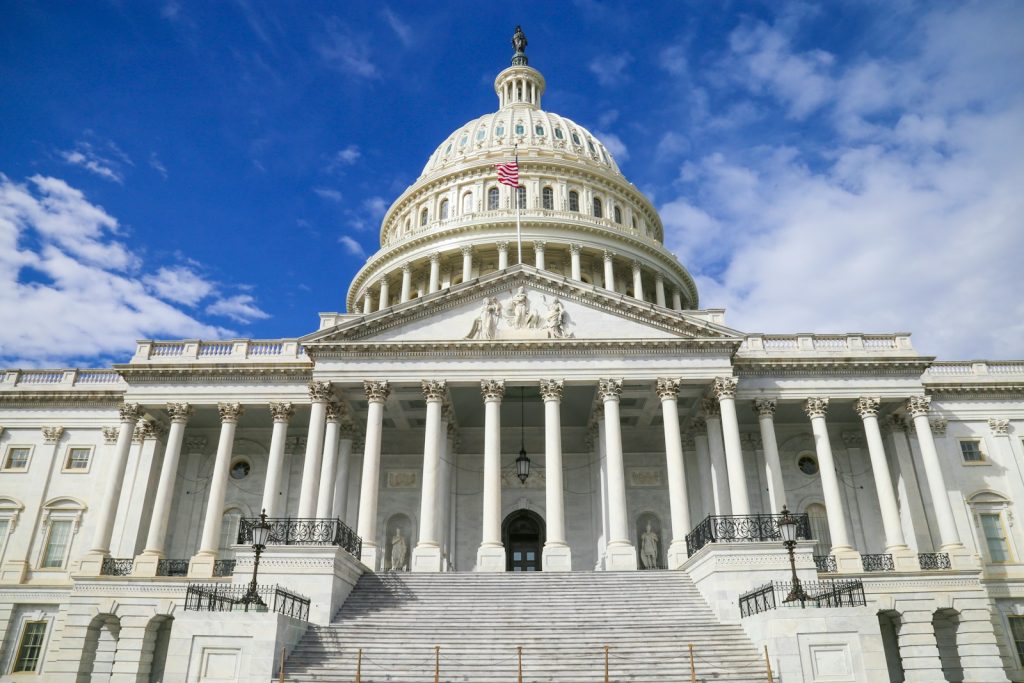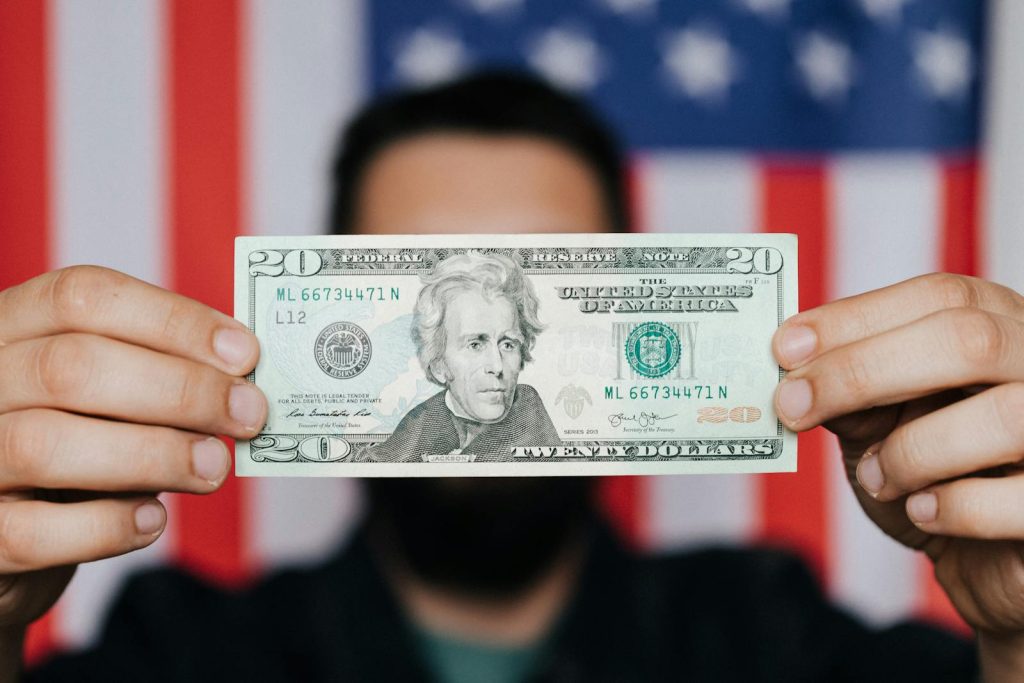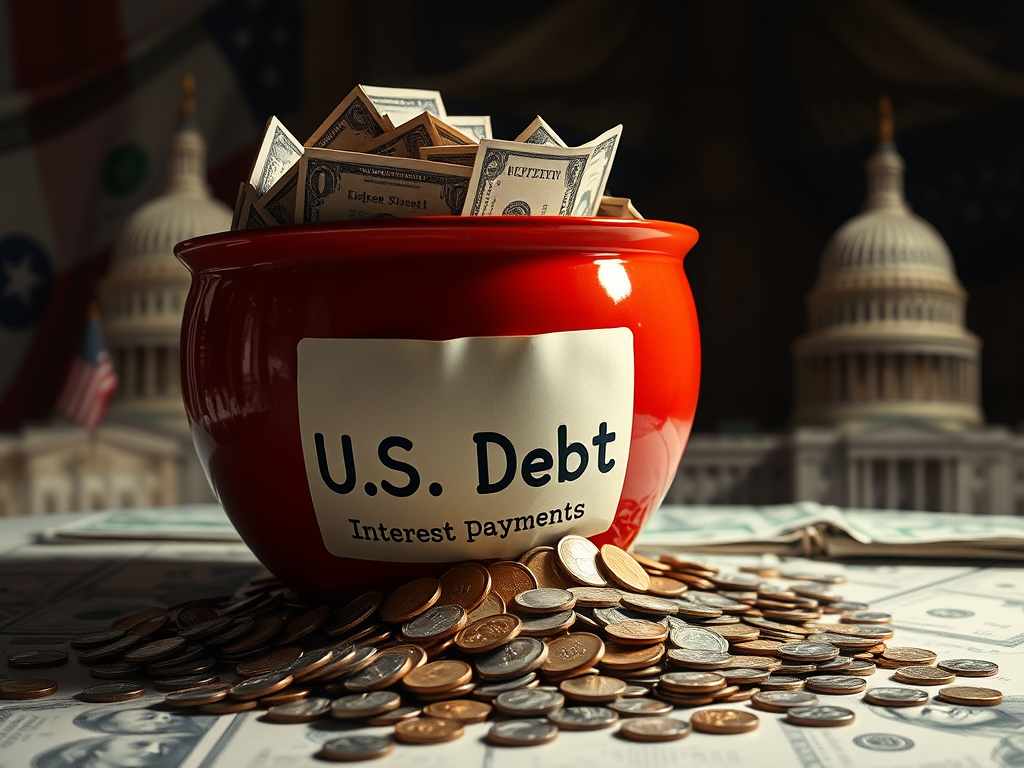The $1.1 Trillion Interest Bill – How America’s Debt Payments Are Reshaping the Economy
Are We Drowning in Debt? The Growing Concern Over U.S. Interest Payments
What happens when you max out your credit cards and only pay the interest every month? You barely make a dent in the principal, and over time, that interest snowballs into an unmanageable burden. That’s exactly what’s happening to the U.S. government right now.
In 2024 alone, the U.S. spent over $1.1 trillion just on interest payments—not paying down debt, just keeping up with the cost of borrowing. That’s more than what the government spends on national defense. Let that sink in. More taxpayer money goes toward servicing old debt than protecting the country. And the kicker? That number is climbing fast.
This raises some serious questions:
- Will higher taxes be the only way to handle this growing problem?
- Could this lead to cuts in Social Security or Medicare?
- How does this massive debt bill impact interest rates, inflation, and your own finances?
Understanding how this debt crisis unfolded and what it means for you isn’t just some wonky economic debate—it’s about your financial future.
Why This Article Matters: What You’ll Learn
We’re breaking this down into simple, clear terms, so you can see how the U.S. got here, why interest payments are skyrocketing, and what it means for everyday Americans. Here’s what you’ll get:
- A deep dive into how we racked up so much debt and why interest payments are soaring.
- A comparison of U.S. interest costs vs. spending on defense, healthcare, and education.
- The real impact on your wallet—mortgage rates, credit cards, taxes, and government benefits.
- What happens next? Could America face a debt crisis if this continues?
If you think this issue only affects politicians and Wall Street, think again. The reality is, everyone—from homeowners to retirees—will feel the effects.
The U.S. Debt Interest Crisis: Bigger Than Ever
Let’s get one thing straight—America has always carried debt. Borrowing isn’t new, and in some cases, it’s even necessary. But what is new is the breakneck speed at which interest payments are swallowing the budget.
Here’s a gut check:
- In 2020, the U.S. paid about $345 billion in interest.
- In 2024, that number nearly tripled to $1.1 trillion.
- By 2030, projections show interest payments could outpace ALL discretionary spending.
Think about that. The government will spend more on interest than on military, education, and infrastructure combined. That’s like having a mortgage so massive, that you can’t afford home repairs or food because you’re buried in interest payments.
A big part of the problem? The Federal Reserve’s aggressive rate hikes. As rates shot up to combat inflation, the cost of servicing old debt exploded. Even though inflation is cooling, the damage is done—America’s debt is now more expensive than ever.
Want a more detailed breakdown? Check out this in-depth analysis of the rising burden of U.S. debt.
What’s Coming Next?
Over the next sections, we’ll get into the nitty-gritty of why interest payments are spiraling out of control, how it affects you, and what options the government has to stop the bleeding. Spoiler alert: None of the solutions are pain-free.
So buckle up—this is one of the biggest financial issues of our time, and understanding it could help you make smarter money decisions in the years ahead.
The Escalation of U.S. National Debt and Interest Payments
How Did We Get Here? The Rise of U.S. National Debt
The U.S. has been in debt for most of its history, but the scale and speed of borrowing today are unprecedented. Decades of budget deficits, economic crises, tax cuts, and government spending have fueled an explosion in national debt. The real problem? Interest payments are eating up more of the budget than ever before—and they’re only going up.
A Historical Look at U.S. Debt Growth
If we rewind a few decades, it’s clear the country didn’t always struggle with sky-high interest costs. Debt grew steadily but was manageable. Then came a series of spending surges and economic shocks:
- 2008 Financial Crisis – The government spent hundreds of billions to bail out banks and stimulate the economy.
- COVID-19 Pandemic – Stimulus checks, emergency relief, and business support added trillions to the debt.
- Federal Reserve Rate Hikes – To curb inflation, the Fed raised interest rates, making debt far more expensive.
The result? The national debt hit $35.5 trillion in 2024, and the government paid a staggering $1.1 trillion in interest—just to stay afloat.
Want a closer look at how debt stacks up over time? See this breakdown of U.S. national debt trends.
Why Are Interest Payments So High? The Perfect Storm
A growing debt burden alone isn’t the issue—it’s the cost of servicing that debt that’s spiraling out of control. There are three major reasons:
- More Borrowing Than Ever
Every year, the government runs a budget deficit, meaning it spends more than it collects in taxes. To cover the gap, it borrows money, which increases total debt. - Higher Interest Rates
The Federal Reserve raised interest rates aggressively to fight inflation. The catch? The government has to pay those higher rates on its debt, leading to soaring interest costs. - Compounding Debt Cycle
Here’s where it gets tricky. The government often borrows money to pay interest on old debt. That means debt grows, interest payments rise, and the cycle continues.

Where Does the Money Go? U.S. Interest Payments vs. Other Spending
If interest payments were just another budget line, they wouldn’t be such a problem. But here’s the shocking part: the U.S. now spends more on interest than on major public services.
Here’s a 2024 spending comparison:
- Interest Payments – $1.1 trillion
- National Defense – $900 billion
- Medicare – $850 billion
- Education and Training Programs – $100 billion
Think about that. The government now spends more paying off past borrowing than it does on healthcare, education, and defense. If this trend continues, there’s less money left for the things Americans rely on.
Want to dig deeper? Check out this tracker on monthly interest costs.
How Much Worse Can It Get?
If nothing changes, by 2030, interest payments will exceed ALL discretionary spending. That means nearly every tax dollar will go toward entitlements (Social Security, Medicare) and debt interest, leaving little for defense, infrastructure, or public services.
The bottom line? The U.S. is on a collision course with a debt crisis unless major changes happen soon. In the next section, we’ll dive into what this means for you and your finances—because this problem isn’t just Washington’s to solve.
Economic Implications of Rising Interest Payments
How Rising Interest Payments Are Reshaping the U.S. Economy
The U.S. government spending $1.1 trillion on interest isn’t just a big number—it’s a massive shift in how tax dollars are used. Instead of funding public services, more money is going toward servicing old debt. That changes everything.
For decades, Washington operated under the assumption that low interest rates made borrowing cheap and manageable. But those days are over. Higher interest rates mean that every dollar borrowed today will cost more tomorrow. The result? A growing chunk of the federal budget is now locked into debt repayment, leaving less room for investments in infrastructure, education, healthcare, and defense.
The Federal Budget Squeeze: What’s Getting Cut?
When debt interest consumes more of the budget, something else has to give. The government has three choices:
- Cut Spending – Reduce funding for federal programs, which could mean smaller Social Security checks, less healthcare funding, or fewer infrastructure projects.
- Raise Taxes – Increase taxes on individuals or businesses to bring in more revenue, which could slow economic growth.
- Borrow More – The most common solution—but that only worsens the problem, as new debt leads to even higher interest payments.
This creates a vicious cycle: more borrowing leads to higher interest payments, which leads to more borrowing—and so on. The bigger the debt, the harder it becomes to escape.
How Interest Payments Impact Economic Growth
Big government debt doesn’t just hurt Washington—it slows down economic growth across the board. Here’s why:
- Less Public Investment – When interest payments eat up the budget, the government has less money to invest in roads, bridges, and technology that drive economic expansion.
- Higher Interest Rates for Everyone – As the government competes for loans, businesses and individuals face higher borrowing costs for mortgages, car loans, and credit cards.
- Reduced Consumer Spending – When families pay more in interest on personal debt, they have less money to spend elsewhere, which slows the economy.
If this continues, the country risks falling into a debt trap where growth slows, borrowing increases, and debt spirals further out of control.
Could the U.S. Face a Fiscal Crisis?
When a country borrows too much, creditors eventually lose confidence in its ability to pay back the debt. That’s when things get dangerous.
Signs of a fiscal crisis might include:
- A sudden drop in demand for U.S. Treasury bonds.
- A rapid decline in the U.S. dollar’s value.
- A major stock market sell-off due to investor fears.
If investors begin demanding higher returns for lending money to the U.S., interest payments could rise even faster, triggering a debt spiral. This isn’t just a theory—countries like Greece and Argentina have faced similar crises due to unchecked borrowing.
What Happens Next?
If the debt keeps rising at its current pace, by 2050, interest payments could be the single largest item in the federal budget. That means every tax dollar will go toward paying for past spending rather than investing in the future.
In Part 4, we’ll break down what this means for you personally—because even if Washington refuses to act, your finances will feel the impact.
Personal Impact and Mitigation Strategies
How the Rising National Debt Affects You
You might be thinking, “Okay, but how does this massive government debt actually impact me?” Here’s the hard truth: you’re already paying for it, whether you realize it or not. The U.S. government’s $1.1 trillion interest bill isn’t just a problem for Washington—it’s a financial burden that trickles down to every household in the country.
If the national debt keeps growing at this pace, expect the following:
- Higher Taxes – The government needs more revenue. That usually means higher income taxes, new fees, or fewer tax breaks.
- Reduced Social Benefits – Programs like Social Security, Medicare, and public education could see funding cuts as interest payments consume more of the budget.
- More Expensive Borrowing – The government competes for money in financial markets. As its borrowing grows, interest rates on mortgages, auto loans, and credit cards rise for everyone.
This isn’t a distant problem—it’s happening now. You’ve already seen it in higher mortgage rates, rising credit card APRs, and cuts to public services. If nothing changes, the financial squeeze will only get worse.
How to Protect Yourself from the Debt Crisis
You can’t single-handedly fix the national debt, but you can take steps to shield your finances from its fallout.
1. Lock In Low-Interest Rates While You Can
If you’re considering buying a home or refinancing a loan, don’t wait. As government borrowing increases, rates will keep climbing. Fixed-rate loans can protect you from future spikes.
2. Diversify Your Investments
A government debt crisis can shake financial markets. Avoid putting all your money into one asset class. Consider:
- Stocks and bonds from stable companies and foreign markets.
- Gold and real estate, which tend to hold value during economic uncertainty.
- High-yield savings and CDs to hedge against inflation.
3. Reduce Your Own Debt Load
The last thing you want during rising interest rates is high personal debt. Pay down:
- Credit cards (focus on high-interest balances first).
- Variable-rate loans, which could get more expensive.
- Unnecessary expenses, freeing up cash for savings.
4. Stay Aware of Policy Changes
Government policies on taxes, benefits, and inflation will affect your finances. Keep an eye on proposed tax hikes, stimulus spending, and financial reforms. These changes will dictate whether the U.S. debt burden eases—or gets even worse.

FAQs: What You Need to Know
What is the current U.S. national debt?
As of 2024, the U.S. national debt stands at $35.5 trillion. That number is increasing daily due to ongoing budget deficits.
Why are interest payments on the national debt so high?
The combination of high borrowing, rising interest rates, and decades of deficit spending has made interest payments skyrocket. In 2024 alone, the U.S. paid $1.1 trillion just in interest.
How do rising interest payments affect me?
Higher government borrowing leads to higher interest rates on loans, potential tax increases, and reduced government services. It also impacts inflation and overall economic stability.
Can the government reduce the national debt?
Yes, but it requires either spending cuts, tax increases, or economic growth—none of which come without trade-offs.
A Problem We Can’t Ignore
The U.S. national debt isn’t just a political talking point—it’s a growing economic storm that affects every American. With rising interest payments squeezing the federal budget, Washington faces tough choices. Raise taxes? Cut spending? Borrow even more? No matter what, we’ll all feel the impact.
For now, your best defense is preparation. Reduce your debt, invest wisely, and pay attention to policy changes. Because whether you like it or not, the consequences of a $35 trillion debt are knocking at your door.
© 2015-2023 by burdenofdebt.com, a LIVenture. All rights reserved. No part of this document may be reproduced or transmitted in any form or by any means, electronic, mechanical, photocopying, recording, or otherwise, without prior written permission of LiVentures LLC.
